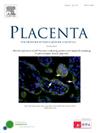羊膜上皮细胞AQP3:细胞存活的关键介质
IF 2.5
2区 医学
Q2 DEVELOPMENTAL BIOLOGY
引用次数: 0
摘要
目的探讨水通道蛋白3 (AQP3)在人羊膜上皮细胞对渗透应激的调节及功能作用。方法将人羊膜上皮细胞系(WISH)和人羊膜外植体分别置于等渗、低渗和高渗条件下。采用RT-qPCR和Western blot检测AQP3的表达情况。使用特异性抑制剂检测TonEBP和NF-κB的参与情况。通过细胞肿胀、细胞活力(MTT)、LDH释放、Bax/Bcl-2比值、TUNEL染色检测AQP3在水转运和细胞凋亡中的作用。结果两种模型均通过激活TonEBP诱导AQP3表达。NF-κB也被激活,但不调节AQP3。AQP3阻断未改变细胞肿胀,表明其在渗透水运输中的作用有限。然而,在高渗条件下,AQP3抑制或沉默会降低细胞活力,增加凋亡标志物。这些发现提示AQP3具有细胞保护作用。结论aqp3可能作为受TonEBP调控的渗透敏感蛋白,促进羊膜上皮细胞在渗透挑战过程中的存活。据报道,在病理性妊娠如羊水过少中,AQP3表达减少可能反映了这种适应机制的失败,潜在地增加了羊膜对应激相关损伤的脆弱性。这可能与理解不良妊娠导致膜破裂的机制有关。本文章由计算机程序翻译,如有差异,请以英文原文为准。
AQP3 in amniotic epithelial cells: A key mediator of cell survival
Objective
To investigate the regulation and functional role of aquaporin 3 (AQP3) in human amniotic epithelial cells in response to osmotic stress.
Methods
A human amniotic epithelial cell line (WISH) and human amnion explants were exposed to iso-, hypo-, and hyperosmotic conditions. AQP3 expression was analyzed by RT-qPCR and Western blot. The involvement of TonEBP and NF-κB was examined using specific inhibitors. Cell swelling, viability (MTT), LDH release, Bax/Bcl-2 ratio, and TUNEL staining were evaluated to determine the role of AQP3 in water transport and apoptosis.
Results
Hyperosmotic stress induced AQP3 expression in both models through TonEBP activation. NF-κB was also activated, but did not regulate AQP3. AQP3 blocking did not alter cell swelling, indicating a limited role in osmotic water transport. However, AQP3 inhibition or silencing reduced cell viability and increased apoptosis markers under hyperosmotic conditions. These findings suggest a cytoprotective role for AQP3.
Conclusion
AQP3 may act as an osmosensitive protein regulated by TonEBP, promoting survival of amniotic epithelial cells during osmotic challenge. Reduced AQP3 expression, as reported in pathological pregnancies such as oligohydramnios, might reflect a failure of this adaptive mechanism, potentially increasing the vulnerability of the amnion to stress-related damage. This may be relevant for understanding the mechanisms leading to membrane rupture in adverse pregnancies.
求助全文
通过发布文献求助,成功后即可免费获取论文全文。
去求助
来源期刊

Placenta
医学-发育生物学
CiteScore
6.30
自引率
10.50%
发文量
391
审稿时长
78 days
期刊介绍:
Placenta publishes high-quality original articles and invited topical reviews on all aspects of human and animal placentation, and the interactions between the mother, the placenta and fetal development. Topics covered include evolution, development, genetics and epigenetics, stem cells, metabolism, transport, immunology, pathology, pharmacology, cell and molecular biology, and developmental programming. The Editors welcome studies on implantation and the endometrium, comparative placentation, the uterine and umbilical circulations, the relationship between fetal and placental development, clinical aspects of altered placental development or function, the placental membranes, the influence of paternal factors on placental development or function, and the assessment of biomarkers of placental disorders.
 求助内容:
求助内容: 应助结果提醒方式:
应助结果提醒方式:


